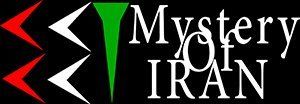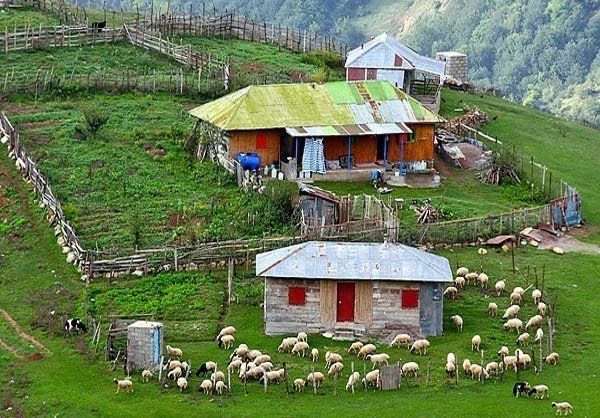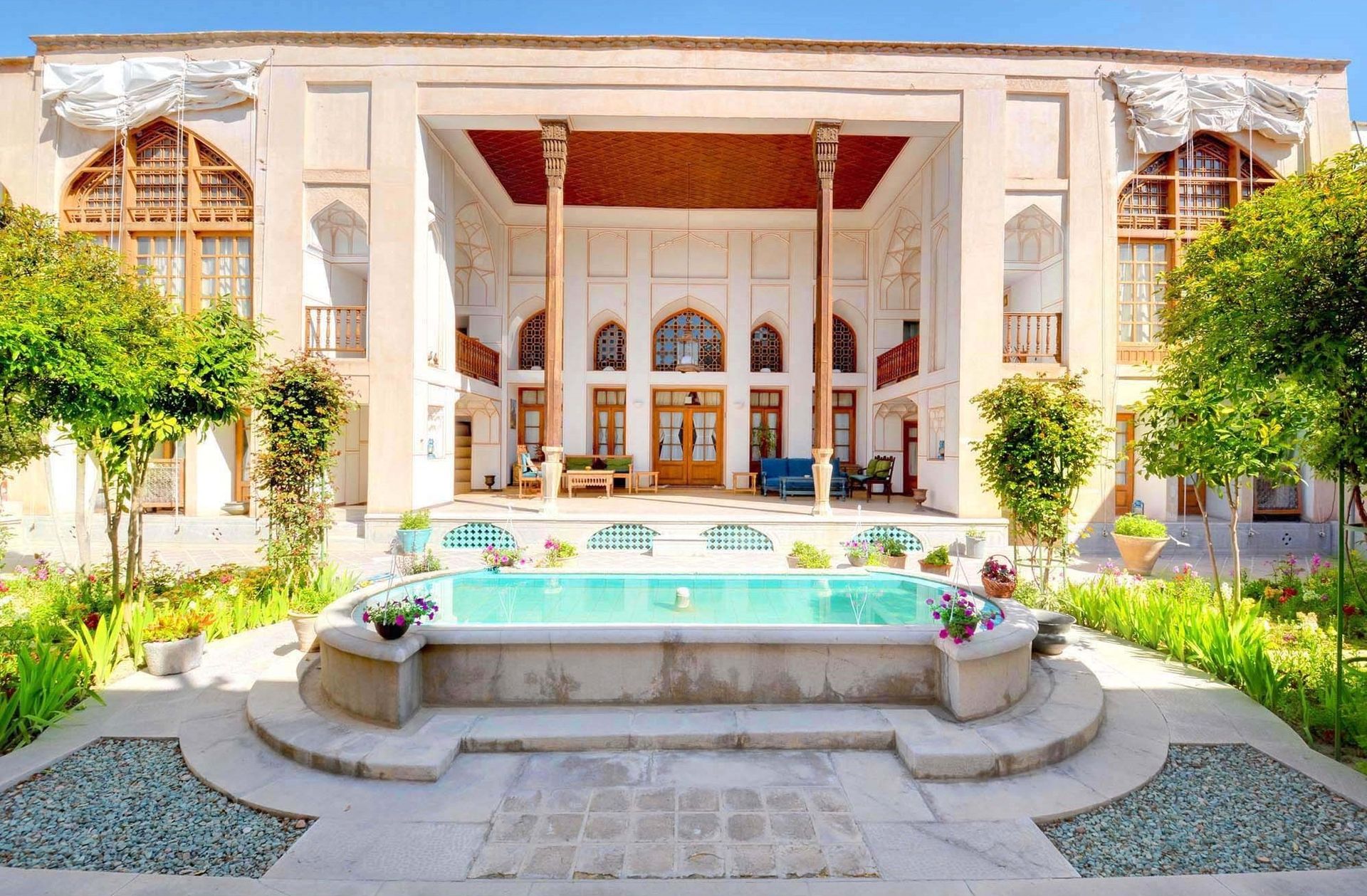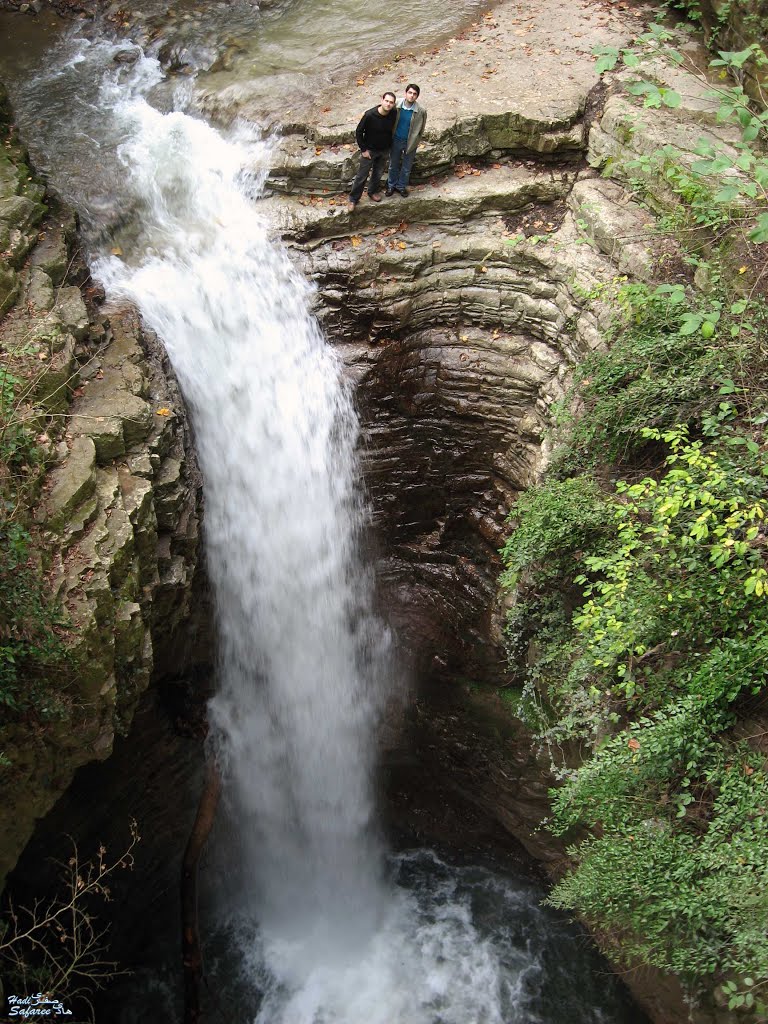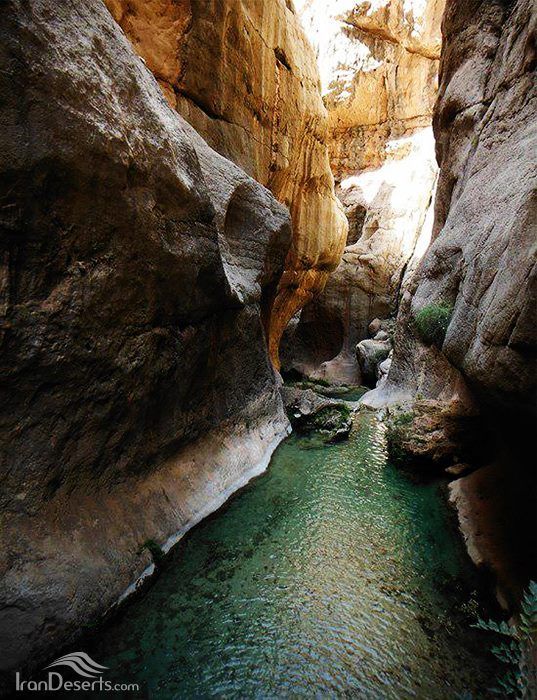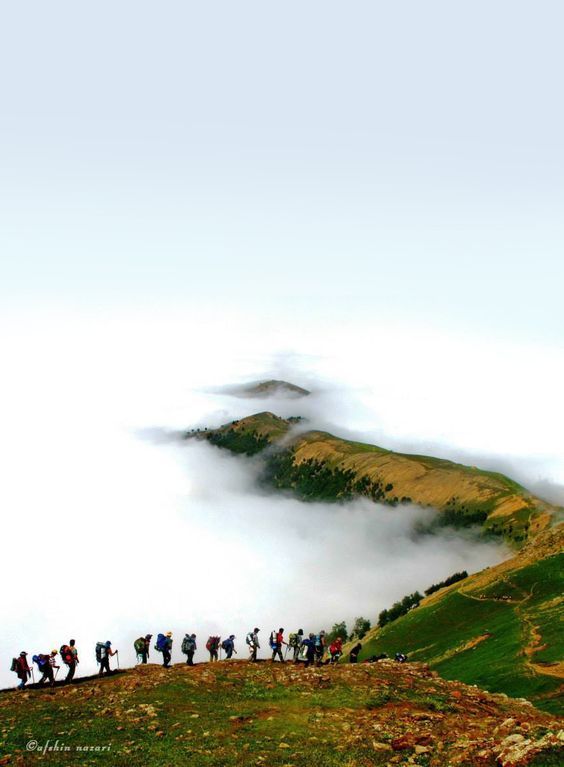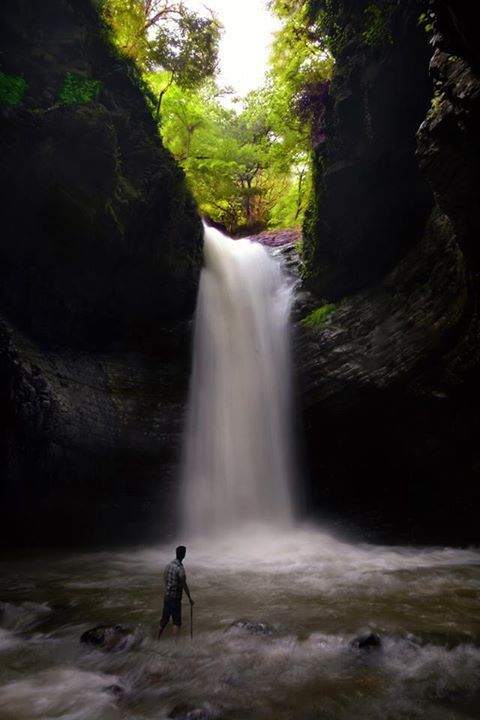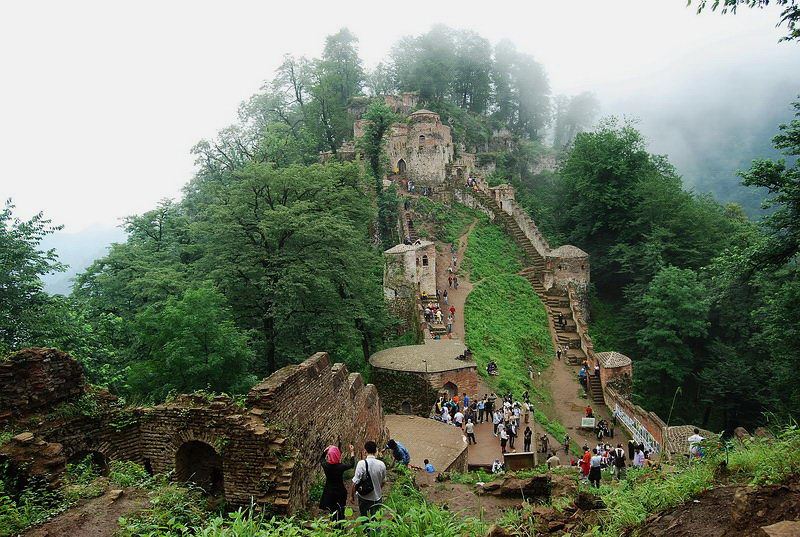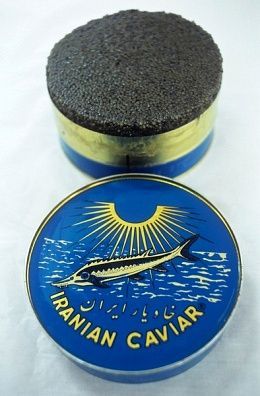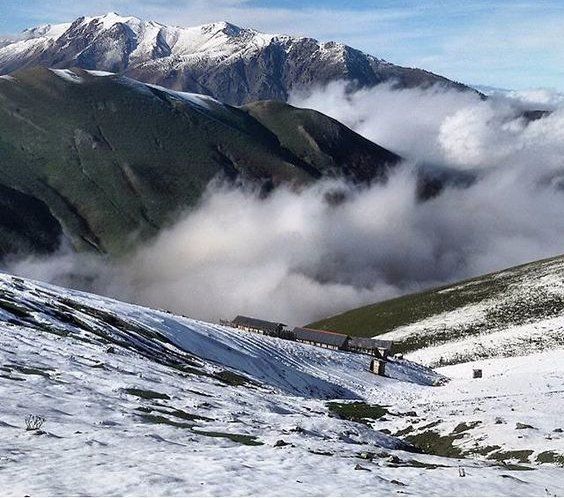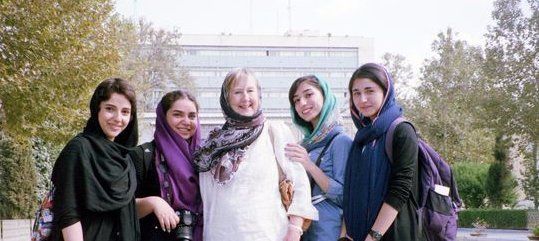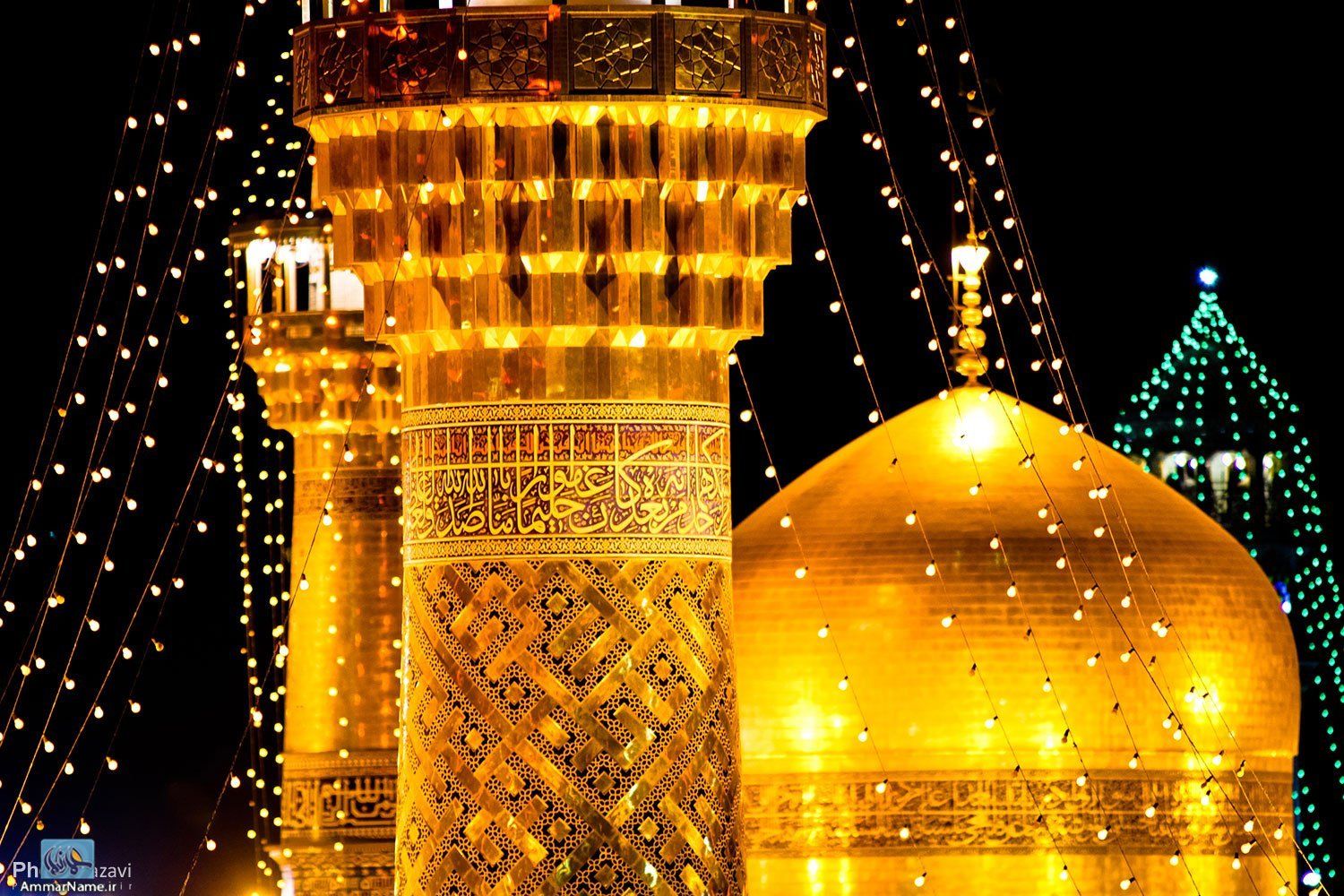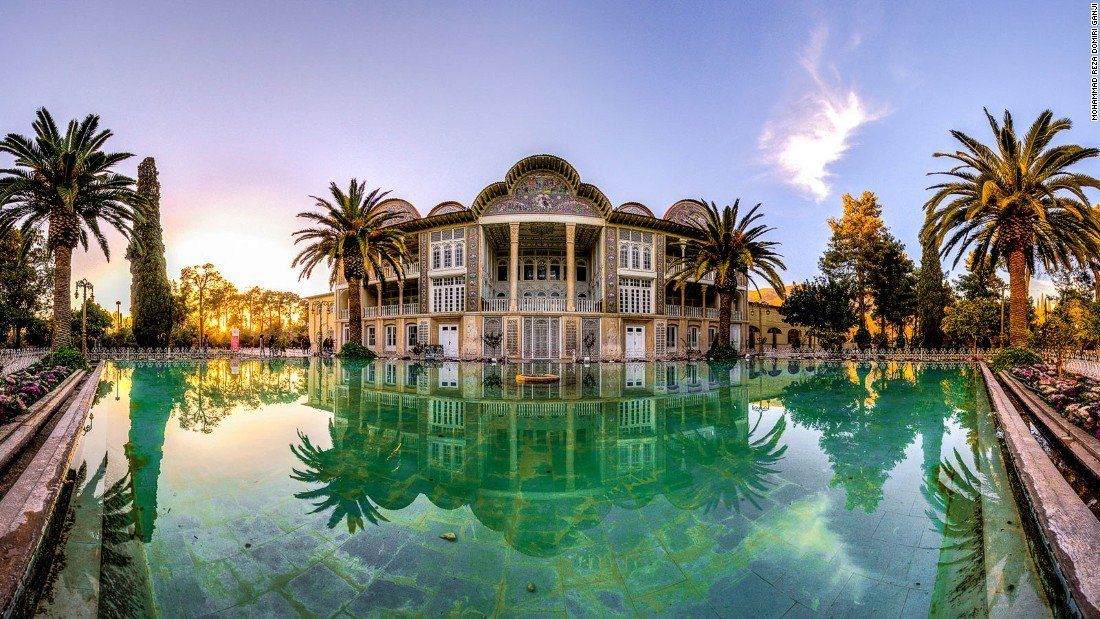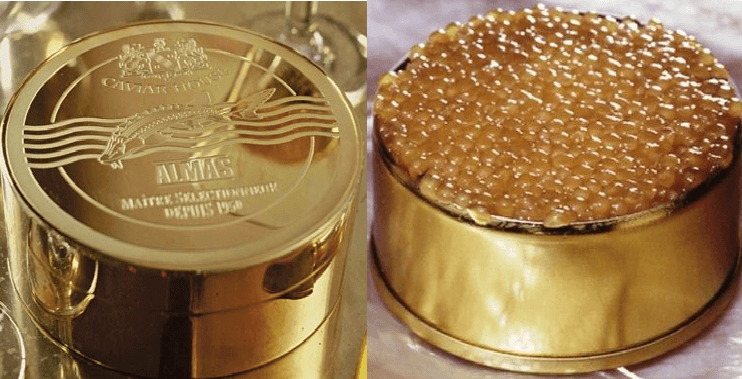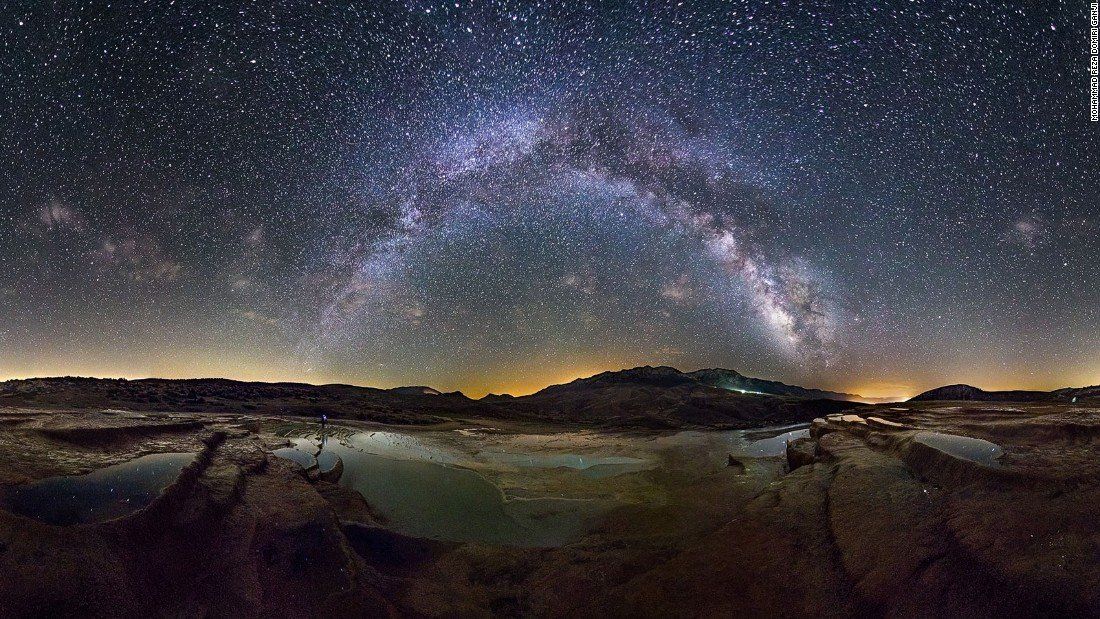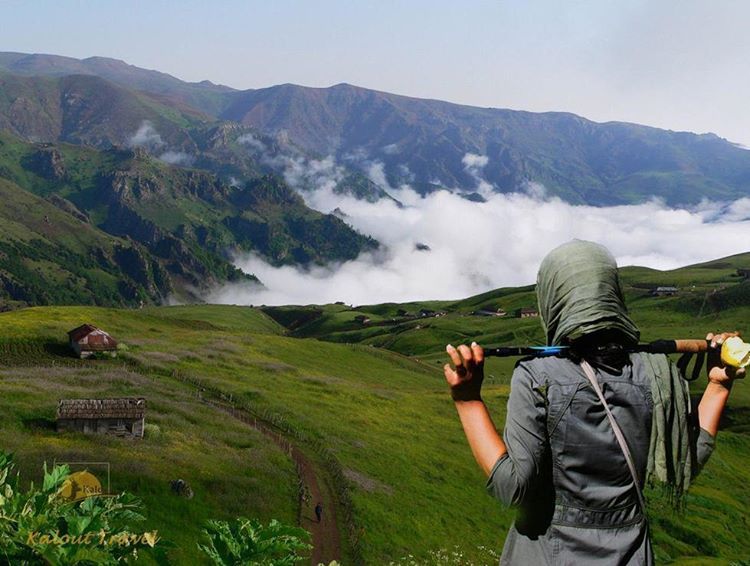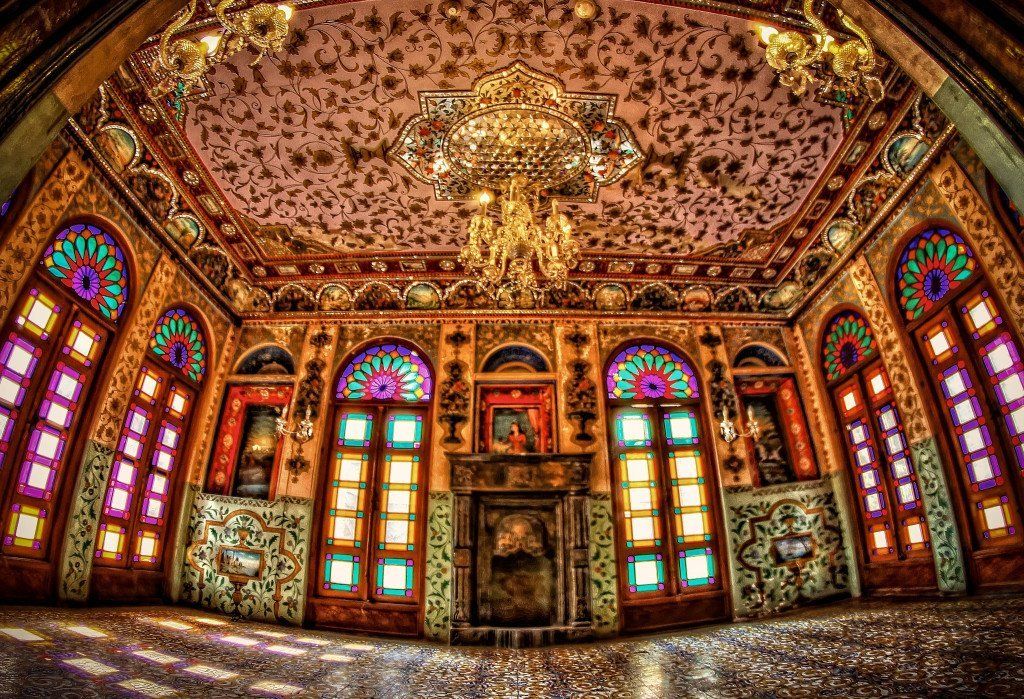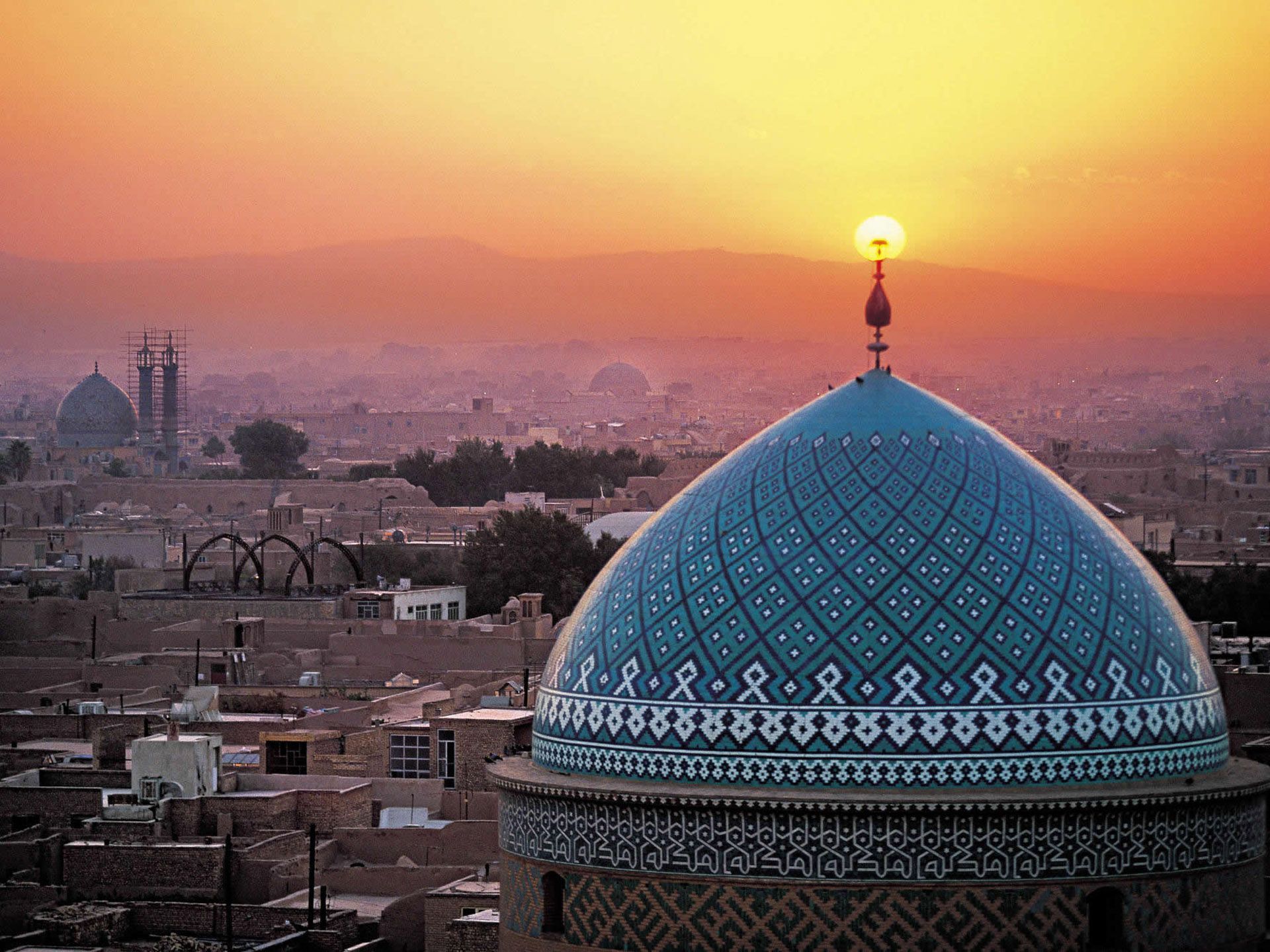Gilan Attractions
One of the most important recent discoveries in this valley has been that of the second to first millennium B.C.royal necropolis of Marlik, dug by professor Ezzatollah Negahban for the Iranian Archaeological Service in 1961 and 1962. (other important sites here include Zainab Bijar, Dura Bijar,Pileh Qaleh and, close to Marlik, Jazim Kul.)
Marlik, Locally know as Cheragh Ali Tepe, has the appearance of a natural hill, its crown being 135m. long and 80m. wide and covered with olive trees. But when Professor Negahban excavated it he discovered the burial mound of a vanished civilization whose existence had never even been suspected, and with priceless treasures including beautifully worked gold and silver vessels,now in the Tehran Museum.
Like many other tepes in these valleys, Marlik had been looted by antique hunters and illegal diggers. Some fifty-three roughly constructed tomb chambers were excavated, some with altars for funerary offerings, and hearths, occupying the single archaeological layer where the dead had been buried over a period of two to three centuries. The tombs were of four types, the first consisting of large,irregularly shaped rooms averaging 5m×3m., whose funerary furnishings of bronze weapons appeared to be those of the tombs of warriors or warrior kings.
The second type was smaller and rectangular, probably housing queens and royal princes, with delicate ornaments, gold jewellery and bronze and terracotta figurines. The third type was roughly 3m. square, more carefully constructed than the others, but with fewer funerary object and probably belonging to the earlier as yet undeveloped period of the Marlik culture. The last type, about 1m×2m., contained the remains of horses and was constructed of boulders, usually adjoining the tombs of their presumed owners. Bronze hourse-bits and loops found here indicate the sacrifice of a horse that was to provide its dead owner with a mount in the next life.
The inscription on one two cylinder seals was probably contemporary with the mid Assyrian period, 1250-833 B.C., while a comparative study of other objects seems to professor Negahban to show that the Marlik culture influenced the craftsmen whose works were found in sialk Cemetery B,Ziwiyeh, Hasanlu, Kelardasht, Khurvin and several Lorestan and Caucasian sites. Such Assyrian motifs as the Tree of Life, winged bulls and griffins, and mountain goats eating the leaves of the Tree of life, are all used on Marlik vessels. Marlik potters and goldsmiths were part of an artistic school that influenced an area embracing northern, western and central Iran and the art of Urartu, and the Neo-Assyrian, Median and Achaemenian arts. Behind this culture was the strong political power of Marlik which can be associated with the arrival of new Indo-European elements.Probably with the beginning of the first millennium B.C. Marlik began to decline, its people driven by pressure from western states to the central Iranian plateau, where they left their cultural evidence. Like other sites in the area, Marlik today is overgrown and has little to show the visitor.
Rasht Attractions
Rasht Museum
Rasht Museum is small, but well presented in a 1930s house. Its mannequin displays illustrate Gilaki lifestyle, amid a selection of 3000-year-old terracotta riton drinking horns in the shape of bulls, rams and deer. Supping from such vessels supposedly endowed the drinker with the powers and skills of the animal depicted.
Village of Masouleh
This thousand-year-old village resembles an anthropological and architectural museum, which is located 60 km southwest of Rasht and 25km west of Fooman in the western most part of Gilan Province. Even though Masouleh is close to the Caspian Sea, but it is 1,050 meters above sea level. The difference between the highest and lowest points in the village itself is 100 meters.
The history of Masouleh dates back to 10th century CE and in past times the village was also known as "Maasalar" and "Khortab". The architectural style of the homes in Masouleh is stair shaped and is remarkable. They are continuous and uninterrupted and have been built in the heart of the mountain. A very interesting point about the homes in Masouleh is that courtyards and roofs are basically meaningless and do not serve their traditional roles and instead serve as pedestrian areas for passersby just like a street would.
Masouleh is the only village in Iran, which forbids all motor vehicles from entering it. The yellow-clay is the predominant external facade of most of the structures in Masouleh, which serves for better visibility in fog. The 3000-meter long mountains surrounding Masouleh are under the cloud of fog very often. Masouleh has a population of almost 800.
Gilan Rural Heritage Museum
In the heart of the natural forest of Saravan, in the area of around 260 hectares the “Gilan Rural Heritage Museum” is established with the same environment of sincerity, affection, and society of typical Gilan’s villages in recent history. The nostalgic past in Gilan Rural Heritage Museum links the past and present generations and introduces a corner of the culture and history of Gilan.
There are all kinds of dismantled and reassembled rural houses from nine different cultural-architectural domains in Gilan province, which carry the memories of precedent 150 years and witness the activities of the villagers of those days.
Anzali Port (Bandar-e-Anzali)
Bandar-e-Anzali is Iran's main Caspian port. You will see fish markets and large ships from the other countries around the Caspian. For IR 200,000 per hour for an entire boat you can go on a motorboat ride through the harbor and into the large lagoon. The boat drivers often suggest that since you are in "Lagoonland" women should be allowed to remove their headscarves. It is a good opportunity since after wearing the scarf for long a breeze through the hair on a motorboat is most welcome!
Roudkhan Castle
Rudkhan Castle is a brick and stone medieval castle in Iran.
Located 25 km southwest of Foman city north of Iran in Gilan province, it is a military complex which had been constructed during the Seljuk Dynasty by followers of the Ismā'īlī sect. The castle is built on two tips of a mount, with an area of 2.6 hectares (6.4 acres). Its architects have benefited from natural mountainous features in the construction of the fort.
The Rudkhan Castle River originates in the surrounding heights and flows from south to north.
After crossing a mountainous winding route with dense forests, the first thing that one notices about the castle is its big entrance gate.
Rudkhan Castle sits at the two peaks of a mountain at elevations of 715 and 670 metres and contains strong fortifications and battlements at a length of 1,550 metres. The castle's 42
.towers still stand intact
Talesh
county in Gilan Province in Iran. The capital of the county is Hashtpar. At the 2006 census, the county's population was 200,000, in 50,000 families.[1] The county is subdivided into four districts: the Central District, Asalem District, Haviq District, and Kargan Rud District. The county has five cities: Hashtpar, Lisar, Asalem, Chubar, and Haviq. The county, as part of wider Gilan Province, borders the Republic of Azerbaijan.
Talesh has mountainous wonderful areas, and its virgin and intact nature is a charming place for those eager of nature. Talesh is situated 140 km north-west of Rasht, on the south-west coast of the Caspian Sea. Talesh township, covering an area of 2373 square kilometers, ¼ of surface area of Gilan.
Further Reading:






















